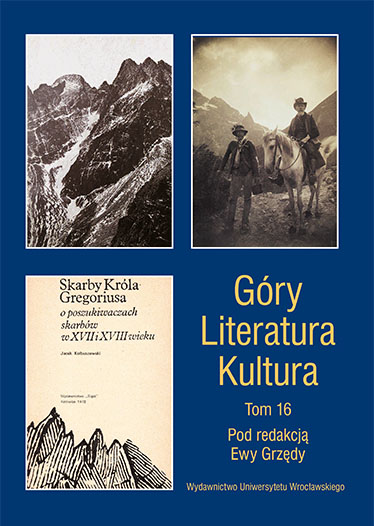

Artykuły

After 1945 numerous ranges of the Sudetes, including parts of the highest Giant Mountains and the spectacular Table Mountains, found themselves within Poland’s borders. The history of the mental assimilation and touristic development of these mountains took a slightly different course than in the case of the ranges influencing the uniquely Polish tradition of perceiving mountain areas, that is above all the Tatras and the Eastern Carpathians. Some more analogies could be found in the Western Beskids, especially in their Silesian part. After the Second World War, the northern side of the Sudetes, like the rest of the so-called Recovered Territories, underwent a multifaceted process of making these “former German” territories familiar, a process which from the point of view of their (re)Polonisers was much more difficult than in the case of the Silesian Lowlands with their obvious Slavic past.
A crucial role in this process was played by Sudetes guides, who in many respects embodied, in a very interesting manner, the changes taking place at the time in the perception of the history of the region and the role of mountain tourism. Leading the working masses of socialist towns and villages to Sněžka, a post-war Polish guide easily, though not without some risky ideological-interpretative about-turns, assimilated the legacy of the old Giant Mountains sedan chair porters, referring, on the other hand, to the Polish Tatra or, more broadly, Carpathian tradition, which was evident in, for example, the adoption of a characteristic costume or in the new design of the guide “tin” (badge).
This bridging of two traditions — the authentic and local, very reluctantly identified as German, and the “imported” Polish-Carpathian, geographically distant — was not the only one that the new Sudetes guides had to get used to. Their basic function placed them — automatically, as it were — in a position of tension between being a leader and being a service provider; in addition, the reinterpretation of the role of the guides in line with the new ideology moved them to a completely different dimension on the wave of social advancement. Guides were no longer commoners earning some extra money by taking wealthy ladies and gentlemen — whom they had met while working as shepherds or gatherers — to the mountains, entertaining the elegant visitors by telling them legends and generating enthusiasm with their more or less authentic folklore. In accordance with the call for a “scientisation” of mountain guiding, the guides were to make the public aware of mountain nature and — what was particularly important in the so-called Recovered Territories — the history of the mountains; having at least a secondary education, trained during courses organised by the rather strongly ideological PTTK (Polish Tourism and Sightseeing Society), the guides were a new type of the “mountain men”, often with strong beliefs in their historical mission and the importance of the role entrusted to them. In the present article the author explores the themes highlighted here and demonstrates the areas of tension mentioned above, referring to the literature on the subject as well as his own experiences of working occasionally in this beautiful profession.